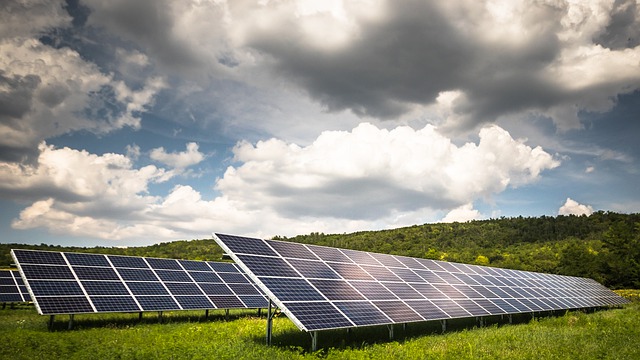Considering solar? There is no better time.
 Daniel P. Thompson, CPA
Daniel P. Thompson, CPA
As accountants, clients look to us for ways to save money. As business consultants, we are frequently asked about ways clients can make money. Over the last several months, one of our answers to both questions have been the same:
Consider solar. Here is why.
The climb in conventional energy prices has begun. In Pennsylvania, PPL Electric Utilities has raised its commercial electricity prices 69% in a recent 12-month period. Metropolitan Edison’s pricing rose 72% over an 18-month period. Installing a solar array for your school, office or any other business facility allows you to generate your own electricity and can hedge against future energy inflation for many years to come.
In recent years, solar has become known as a cost-effective way to generate electricity over most of the world. When you install a solar array you not only produce electricity at the lowest possible cost, but also you own your own generating system.
There are a lot of good reasons to consider why now is the time to move forward on solar:
Like most technology, with innovation comes price reduction. Solar is no exception: The cost of solar has plummeted over the last decade and has reached a point in which significant future cost decreases are unlikely. The cost of panels has led the decrease in overall system cost, from $2.00 per watt in 2011 to just over $0.30 per watt in 2022.
Federal, state, and utility incentives are available: A 26% Federal Investment Tax Credit (ITC) is available for solar installations. The 26% tax credit is currently scheduled to step down to 22% in 2023, then to 10% in 2024, unless it is extended in Washington. In addition, in certain instances, federal REAP grants may be available to offset installation costs. In Pennsylvania and other states, Solar Renewable Energy Certificates (SREC), or ‘green certificates’ are available and in Pennsylvania SREC’s are currently worth the equivalent of $0.04/kWh, almost half the value of conventional electricity cost. Some utilities are also offering rebates for solar installation, and these rebates can translate into a significant reduction in net project cost.
The projected financial returns can be substantial with appropriate planning in design and financing: A for-profit business can see significant first year returns on its investment due to the various credits and depreciation deductions available. After the initial return, energy savings will pay the debt service on the loan and still yield long-term, typically single digit returns on the investment. By exploring financing options, the returns could be even higher.
The expected life of an array is 40 years: There are no moving parts to a solar panel, and as a result, panels come with a 30-year power production warranty. That warranty guarantees at least 80% of the panel’s rated output for 30 years, or the panel will be replaced free of charge to the owner. That means an array installed this year can protect a school, hospital, or any business from conventional energy inflation for up to 40 years.
Once an array is installed, the cost of electricity from that system is fixed: Beyond the initial cost of the solar array, the only other future costs are minor maintenance and replacement of the inverter (converts solar energy into commercially usable energy) 20 years after the initial installation. Otherwise, a solar owner’s electricity costs are fixed for the life of the system.
The marketing opportunities for businesses, schools, and manufacturers can be significant: For example, a business may gain competitive advantage by marketing environmental responsibility while it keeps its energy cost below competitors. A manufacturing facility that is solar powered can let the community know that renewable energy is good for community wellness. And an auto dealer seeing increased interest in electric vehicles from its customers could gain a competitive advantage advertising its solar generation, since those technologies are very connected in the minds of customers.
Look beyond the horizon: Staying ahead of the competitive curve is what keeps businesses healthy. It is likely the costs of conventional energy will not escape inflation over the next 30 to 40 years, and a business that can control energy costs can also position itself for long-term sustainability.
Bottom line: Our accounting and consulting advice to businesses? Now really is the time to consider and investigate how solar electricity may mitigate your future energy costs. Start with having an analysis performed specific to your property.
If you have questions on this or other opportunities for your business, contact your Boyer & Ritter accountant and consultant today.
Dan Thompson is a principal and co-chair of Boyer & Ritter’s Dealership Services Group, which serves approximately 300 dealers in Pennsylvania and surrounding states. During his career at Boyer & Ritter, Dan has provided accounting, auditing, tax, and business consulting to clients in a variety of industries. He can be reached at 717-761-7210 or dthompson@cpabr.com.



